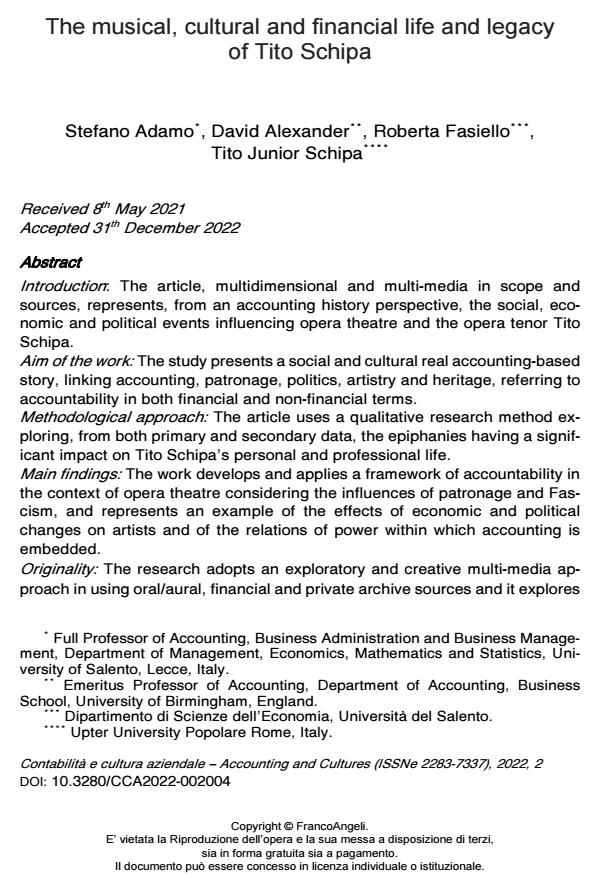The musical, cultural and financial life and legacy of Tito Schipa
Journal title CONTABILITÀ E CULTURA AZIENDALE
Author/s Stefano Adamo, David Alexander, Roberta Fasiello, Tito Junior Schipa
Publishing Year 2023 Issue 2022/2
Language English Pages 37 P. 53-89 File size 180 KB
DOI 10.3280/CCA2022-002004
DOI is like a bar code for intellectual property: to have more infomation
click here
Below, you can see the article first page
If you want to buy this article in PDF format, you can do it, following the instructions to buy download credits

FrancoAngeli is member of Publishers International Linking Association, Inc (PILA), a not-for-profit association which run the CrossRef service enabling links to and from online scholarly content.
Introduction: The article, multidimensional and multi-media in scope and sources, represents, from an accounting history perspective, the social, economic and polit-ical events influencing opera theatre and the opera tenor Tito Schipa. Aim of the work: The study presents a social and cultural real accounting-based story, linking accounting, patronage, politics, artistry and heritage, referring to ac-countability in both financial and non-financial terms. Methodological approach: The article uses a qualitative research method explor-ing, from both primary and secondary data, the epiphanies having a significant im-pact on Tito Schipa’s personal and professional life. Main findings: The work develops and applies a framework of accountability in the context of opera theatre considering the influences of patronage and Fascism, and represents an example of the effects of economic and political changes on artists and of the relations of power within which accounting is embedded. Originality: The research adopts an exploratory and creative multi-media approach in using oral/aural, financial and private archive sources and it explores the Tito Schipa’s life and career, largely unknown, and the related ‘accounting’ information.
Keywords: music, patronage, accountability, decision-making, investments, opera
Stefano Adamo, David Alexander, Roberta Fasiello, Tito Junior Schipa, The musical, cultural and financial life and legacy of Tito Schipa in "CONTABILITÀ E CULTURA AZIENDALE" 2/2022, pp 53-89, DOI: 10.3280/CCA2022-002004